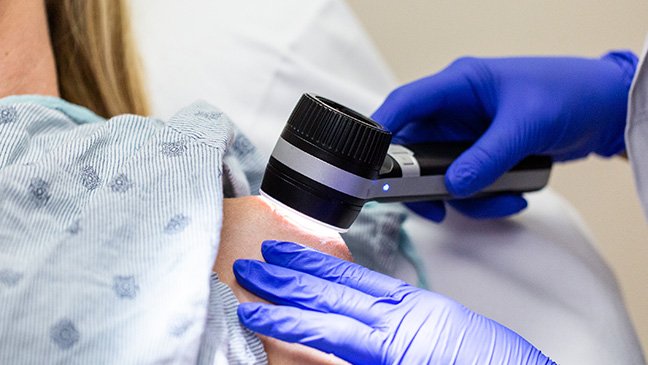- Diseases
- Acoustic Neuroma (14)
- Adrenal Gland Tumor (24)
- Anal Cancer (66)
- Anemia (2)
- Appendix Cancer (16)
- Bile Duct Cancer (28)
- Bladder Cancer (68)
- Brain Metastases (28)
- Brain Tumor (230)
- Breast Cancer (716)
- Breast Implant-Associated Anaplastic Large Cell Lymphoma (2)
- Cancer of Unknown Primary (4)
- Carcinoid Tumor (8)
- Cervical Cancer (154)
- Colon Cancer (164)
- Colorectal Cancer (110)
- Endocrine Tumor (4)
- Esophageal Cancer (42)
- Eye Cancer (36)
- Fallopian Tube Cancer (6)
- Germ Cell Tumor (4)
- Gestational Trophoblastic Disease (2)
- Head and Neck Cancer (6)
- Kidney Cancer (124)
- Leukemia (344)
- Liver Cancer (50)
- Lung Cancer (288)
- Lymphoma (284)
- Mesothelioma (14)
- Metastasis (30)
- Multiple Myeloma (98)
- Myelodysplastic Syndrome (60)
- Myeloproliferative Neoplasm (4)
- Neuroendocrine Tumors (16)
- Oral Cancer (100)
- Ovarian Cancer (170)
- Pancreatic Cancer (166)
- Parathyroid Disease (2)
- Penile Cancer (14)
- Pituitary Tumor (6)
- Prostate Cancer (144)
- Rectal Cancer (58)
- Renal Medullary Carcinoma (6)
- Salivary Gland Cancer (14)
- Sarcoma (236)
- Skin Cancer (294)
- Skull Base Tumors (56)
- Spinal Tumor (12)
- Stomach Cancer (60)
- Testicular Cancer (28)
- Throat Cancer (90)
- Thymoma (6)
- Thyroid Cancer (98)
- Tonsil Cancer (30)
- Uterine Cancer (78)
- Vaginal Cancer (14)
- Vulvar Cancer (18)
- Cancer Topic
- Adolescent and Young Adult Cancer Issues (20)
- Advance Care Planning (10)
- Biostatistics (2)
- Blood Donation (18)
- Bone Health (8)
- COVID-19 (362)
- Cancer Recurrence (120)
- Childhood Cancer Issues (120)
- Clinical Trials (624)
- Complementary Integrative Medicine (24)
- Cytogenetics (2)
- DNA Methylation (4)
- Diagnosis (230)
- Epigenetics (6)
- Fertility (62)
- Follow-up Guidelines (2)
- Health Disparities (14)
- Hereditary Cancer Syndromes (122)
- Immunology (18)
- Li-Fraumeni Syndrome (8)
- Mental Health (118)
- Molecular Diagnostics (8)
- Pain Management (62)
- Palliative Care (8)
- Pathology (10)
- Physical Therapy (18)
- Pregnancy (18)
- Prevention (892)
- Research (390)
- Second Opinion (74)
- Sexuality (16)
- Side Effects (604)
- Sleep Disorders (10)
- Stem Cell Transplantation Cellular Therapy (216)
- Support (404)
- Survivorship (322)
- Symptoms (184)
- Treatment (1772)
Breast reconstruction options: What to know about DIEP flaps and tissue flaps
5 minute read | Published September 07, 2021
Medically Reviewed | Last reviewed by an MD Anderson Cancer Center medical professional on September 07, 2021
Navigating breast reconstruction options can be overwhelming. There are so many decisions to make. Will you have immediate or delayed reconstruction? Will it be implant-based or a DIEP flap or a tissue flap, which relies on the patient’s own tissue?
While implants are still more common, more and more breast cancer patients are considering reconstruction using their own tissue from other parts of the body.
“This is a great option for patients who want natural-looking and supple-feeling reconstructions that are durable and long-lasting,” says plastic surgeon Carrie Chu, M.D.
Here are answers to common questions that patients considering this type of breast reconstruction may have.
What is tissue flap breast reconstruction?
Tissue flap breast reconstruction is a procedure in which the patient’s own tissue is used to recreate the breasts after a mastectomy. The procedure is performed by plastic surgeons and relies on microsurgery techniques.
“Many patients have heard of a DIEP flap. That’s the most common kind, in which the tissue is taken from the abdomen to recreate the breast,” Chu says. “But we can take tissue from other parts of the body if that is better for the patient, based on their lifestyle, body shape, occupation or previous surgical scars.”
Surgeons most commonly remove tissue from the following parts of the body to recreate the breast tissue:
- Abdominal (also called DIEP flap)
- Inner thighs
- Outer thighs
- Back
- Buttock tissue
- Combination of sites (also called stacked flaps)
Which is better – DIEP flap or implants?
“The answer to that is up to the patient,” says plastic surgeon Rene Largo, M.D. “The surgeon is able to customize the reconstruction for each patient. Many patients who have breast reconstruction with a DIEP flap or tissue flap from other parts of the body report that they’re happier with the cosmetic result because it’s more natural and provides long-lasting results.”
Other advantages to the DIEP flap or tissue flaps include the possibility of regaining sensation in the breast and the potential improvement of the shape of area the tissue was taken from, such as slimmer thighs, a tummy tuck or a body lift.
But DIEP or other tissue flap reconstruction includes a longer surgery and a lengthier recovery in which multiple parts of the body – the chest and where the tissue was taken from – have to heal.
There’s also a risk that the transferred tissue won’t re-establish the blood supply and will need to be repaired in surgery. This is called flap failure.
“Looking for an experienced plastic surgeon can help prevent flap failure from occurring,” Chu says. “MD Anderson plastic surgeons have a less than 1% flap failure rate.”
Finally, the surgery isn’t for everyone. Not all patients wanting to undergo breast reconstruction have enough tissue for a DIEP flap or a tissue flap.
For these patients, implant reconstruction may be the best option. The advantages of implant reconstruction include a shorter time for surgery and recovery. But implant reconstruction is usually a two-stage process, and with the average lifespan of implants being 10 to 15 years, patients may require more surgeries a few years later when implants need to be replaced.
What should patients preparing for DIEP flap or tissue flap reconstruction anticipate?
DIEP flap or tissue flap breast reconstruction can be performed immediately following a mastectomy or as delayed reconstruction. Patients will be given general anesthesia before surgery. The surgery takes four to six hours, but it can take longer if performed along with a mastectomy.
During the procedure, the surgical team removes the tissue from the selected donor site and uses it to recreate the breast. Surgeons also uses a technique called microsurgery to remove blood vessels from the donor site and reestablish the blood flow to nourish the recreated breast.
What is recovery like after a DIEP flap or tissue flap reconstruction?
Following tissue flap breast reconstruction, patients can expect to stay in the hospital for two to three nights, depending on their specific procedure. Patients will have drains and bandages that nurses will teach them how to care for. Depending on the donor site, some patients may have specific activity restrictions. Patients often experience some pain at the procedure sites, but care teams can provide multiple techniques for managing pain.
“Most patients start to feel like themselves again after about four to six weeks,” Largo says.
Are there any new developments or ongoing research in breast reconstruction?
Tissue flap reconstruction – especially when tissue is taken from more than one part of the body – is fairly new and not performed at many hospitals. Cutting-edge plastic surgeons are constantly looking at ways to improve these techniques.
Here at MD Anderson, plastic surgeon Jesse Selber, M.D., has begun using a new technique to perform DIEP flap breast reconstruction. In this procedure, Selber uses the da Vinci robotic surgical system to remove the tissue from the abdomen.
“Only a few surgeons in the world are performing the surgery using this technique, but it offers some huge benefits,” Selber says. “Not only is this easier on the surgeon, but it almost always results in a speedier recovery for patients because the surgeon doesn’t have to cut through as much of the abdominal musculature like we do in a traditional DIEP flap.”
What should patients look for when deciding where to get tissue flap reconstruction?
When undergoing breast cancer treatment, it’s important to choose a care center where your team works closely with your plastic surgeons from the start.
“At MD Anderson our plastic surgeons are involved from the very beginning. We only work with cancer patients, so we understand what patients face,” Chu says.
Patients who decide to have tissue flap breast reconstruction should look for experienced microsurgeons who perform a high number of tissue flap reconstruction surgeries.
“High volume means better outcomes,” Selber says. “It’s critical in terms of patient satisfaction and safety.”
Request an appointment at MD Anderson online or by calling 1-855-946-3759.

We can take tissue from other parts of the body if that is better for the patient.
Carrie Chu, M.D.
Physician





